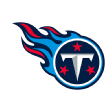The impact that winning the battle of the line of scrimmage has on a team's performance cannot be overstated. Over a decade of research I've done in measuring run blocking indicates that ball carriers are four to five times more productive on plays with good run blocking versus plays with bad run blocking. The passing game also displays a huge disparity, as quarterbacks are roughly three times as productive on a yards-per-dropback basis with a clean pass pocket as they are on dropbacks when pass rush pressure is impacting the pass pocket.
These elements can be even more impactful now that we have reached the divisional playoff round of the 2017 NFL campaign, so let's take a look at how the playoff remaining graded out in their blocking walls (a term that includes anyone who blocks on a play) and their defensive front sevens.
The details of the grading system used to gauge those unit groups performances can be found here, with the nutshell explanation being that it uses a variety of advanced blocking and defensive metrics to come up with an A through F grade for every platoon. And for the completists in the audience, here are the grades for all 32 teams this season.
Offensive blocking wall grades for the divisional round

1. New Orleans Saints
2017 run-blocking grade: A
2017 pass-blocking grade: A-
2017 overall blocking grade: A
Alvin Kamara and Mark Ingram rightfully get a lot of credit for being the first pair of running back teammates selected to the Pro Bowl in at least 42 years, but a lot of those kudos need to go to the New Orleans blocking wall that graded out as the best in the league this season. The elite blocking allowed the Saints to finish first in my good blocking yards per attempt (GBYPA) metric that measures per carry prowess on rushing plays with good blocking (8.9) as well as claim the top spot in my good-blocking productivity (GBP) metric that gauges overall rush game production (4.1).
The Saints' pass blocking was nearly as powerful, as New Orleans finished second in ESPN Stats & Information's pass pressure rate (PPR) metric that measures how often an offense allows pass rush pressure (20.1 percent).
Outlook:

2. Atlanta Falcons
2017 run-blocking grade: A-
2017 pass-blocking grade: A-
2017 overall blocking grade: A-
The Falcons saw a drop-off of 187 points in scoring from the 2016 to 2017 seasons, but blocking was not one of the reasons why. Atlanta finished sixth in GBP (3.7), fifth in rush yards per carry before first defensive contact (YBCT) (2.5), fifth in sack rate (4.2 percent) and ninth in average time in pocket (TIP) (2.4 seconds). It was also one of only three teams (New Orleans and New England) to earn an "A" grade in both rush and pass blocking.
Outlook: As consistent as their blocking was over the course of the season, Atlanta's blocking edge of late has trended heavily in the direction of the ground game. The Falcons closed the season with six straight games with a GBR above the 42.2 percent league average, including four games with a GBR of 50 percent or higher. This contrasts to closing out this season with four of the past five games above the 28.2 percent league median in PPR and allowing a season-high 42.9 PPR in the wild-card matchup against the Los Angeles Rams. That may make the Falcons aim to make this playoff run more Devonta Freeman- and Tevin Coleman-centric than Matt Ryan- and Julio Jones-centric.

3. New England Patriots
2017 run-blocking grade: A-
2017 pass-blocking grade: A-
2017 overall blocking grade: A-
The value of offensive line coach Dante Scarnecchia may never have been more evident than this season, as the Patriots earned these "A" grades via highly consistent metric rankings. New England ranked seventh in PPR (24.7), eighth in quarterback contact rate (QCR) (7.9 percent) and sixth in TIP (2.4). The Patriots' run blocking was just as strong, as New England placed fifth in my good blocking rate (GBR) metric, which measures how often an offense gives its ball carriers quality run blocking (48.1 percent). That latter number led to the Patriots rating eighth in GBP (3.6). New England's run blocking also peaked in the latter portion of the season, as the Patriots posted a GBR of 57 percent or higher in four of their past seven games.
Outlook: The Titans have the second-highest rush defense grade among divisional playoff teams, so look for the Patriots to rely on their aerial attack more this week. If New England wins and advances, every rush defense aside from the Eagles would be a potential mismatch in favor of the Patriots' run blocking, thus allowing Tom Brady to serve as a dangerous passing counterpuncher.

4. Pittsburgh Steelers
2017 run-blocking grade: B+
2017 pass-blocking grade: A-
2017 overall blocking grade: A-
The Steelers rated third in GBR (48.2) and could actually have graded much higher than a B-plus in overall run blocking were it not for Le'Veon Bell's insistence on slowly reading defensive fronts on nearly every carry. Defenses have now learned to stay patient and wait for Bell to commit to a hole before making their own defensive commitment. This is why the Steelers ranked 31st in GBYPA this season (6.6), a grade that was partially responsible for the lower than "A" run blocking grade. The good news here is Pittsburgh's coaches recognized that this was happening and coached Bell to mix in quickly hitting a gap along with his reading so that the defense would not know which method he was using on a particular play. This altered approach led the Steelers to end the season with two of their best GBYPA totals of the season in Weeks 15 and 16.
Pittsburgh's pass blocking is arguably the best in the league, as the Steelers ranked first in PPR (18.5), third in QCR (6.6) and third in sack rate (3.9).
Outlook: The Jaguars' subpar run defense grade should lean Pittsburgh heavily toward a ground-centric approach in that matchup. The Patriots' front seven grades out as the worst among the divisional teams, so the Steelers would also have a potentially huge advantage in that potential AFC Championship matchup. The Titans have the highest graded front seven left in the AFC side of the playoffs, so Pittsburgh's offense might do well to avoid that matchup if possible.

5. Tennessee Titans
2017 run-blocking grade: B+
2017 pass-blocking grade: B+
2017 overall blocking grade: B+
The Titans came into this season with one of the best blocking walls in the league and placed second in my midseason blocking walls review back in October. That pace has not continued over the second half of the season, as the Titans ended the season with the seventh-highest overall blocking wall grade. A major contributor to the downfall was a surprising decline in run blocking. Tennessee posted a GBR of lower than 30 percent in three out of four games between Weeks 11-14. They haven't posted a GBR that low in any of the games since then so this may have been a short-term anomaly.
The Titans' pass blocking was superb for most of the season, as Tennessee ranked fourth in PPR (20.9), but it should be noted that the 28.6 and 27.0 PPR totals the Titans have posted over the past two weeks rate among the bottom six PPR marks this club has tallied all season.
Outlook: There is no reason Tennessee should try to get into a passing-fest against the Patriots, so look for the Titans to lean on their ground game against New England's low-rated front seven. The same rule would apply in an AFC title game tilt against either the Steelers or the Jaguars.

6. Jacksonville Jaguars
2017 run-blocking grade: B-
2017 pass-blocking grade: B-
2017 overall blocking grade: B-
Leonard Fournette gives the Jaguars' backfield a breakaway ability that led to Jacksonville ranking second in GBYPA (8.6) and ninth in both GBP (3.5) and YBCT (2.3). That skill allowed the Jaguars' ground game to offset the No. 21 rating in GBR (40.7), a combination that means this is more of a boom-bust proposition than is generally thought.
Jacksonville's pass blocking can boast of a No. 5 ranking in sack rate (4.2) and placing 12th in TIP (2.3), yet those metrics mask a huge pass-blocking weakness found in the Jaguars ranking 27th in PPR (33.3). This flaw showed up in last week's wild-card battle against Buffalo, as the Bills hit Blake Bortles on 30.3 percent of his dropbacks, which is a season high in that category for the Jaguars' offense.
Outlook: Having pass-blocking woes against a Steelers defense that led the league in sacks (56) and sack rate (9.7) means the Jaguars are all but guaranteed to rely on Fournette early and often. That trait would likely continue in a prospective AFC Championship Game against New England, but the Jaguars' season-high 10.6 air yards per attempt against the Titans in Week 17 suggests that potential matchup would propel the Jaguars to throw the ball more often.

7. Philadelphia Eagles
2017 run-blocking grade: B+
2017 pass-blocking grade: C
2017 overall blocking grade: B-
One of the most impressive characteristics of Carson Wentz's potential MVP campaign is that he posted his elite numbers despite some less than stellar pass blocking, as the Eagles ranked 21st in PPR allowed (30 percent). Those numbers have become even worse of late, as Philadelphia has posted a 31.5 percent PPR since Week 11. That should motivate the Eagles to run the ball as often as possible, something that will be helped by Philadelphia rating 11th in GBR (43.7), seventh in GBYPA (8.5) and fourth in GBP (3.7).
Outlook: The Eagles do not want to ask Nick Foles to do any more than absolutely necessary. They should be able to rely on a limited approach for Foles, as Atlanta's rush defense has metrics that are a step below their pass rushing metrics, so Philadelphia should be able to keep its ground game in gear as long as the scoreboard is favorable. The Saints and Vikings both have D-plus or lower grades in the advanced run defense metrics, so the Eagles could use that same approach in the NFC Championship.

8. Minnesota Vikings
2017 run-blocking grade: C-
2017 pass-blocking grade: B+
2017 overall blocking grade: B-
The Vikings finished 10th in the league in points scored (382) despite having the worst blocking among teams left in the playoffs. Minnesota ranked 24th in PPR (31.4), 21st in YBCT (2.0) and 20th in GBR (41.1). A silver lining can be found in the Vikings posting a 51 percent or higher GBR in two of their past three games. Minnesota also ranked eighth in sack rate (4.7) and 11th in QCR (10.4), so they are adept at keeping Case Keenum from getting hit.
Outlook: The Saints have one of the largest grade disparities between rush defense (D-minus) and pass rush (B-plus), so the Vikings will almost have an invitation to rush the ball as often as possible. That would not be the case if Minnesota were to face Philadelphia's powerful defense in an NFC title matchup, but a battle against Atlanta in that contest would also open the door for a ground-heavy game plan.
Defensive front-seven grades for the divisional round

1. Philadelphia Eagles
2017 rush defense grade: A
2017 pass-rush grade: B
2017 overall front-seven grade: B+
The Eagles' multifaceted offense has garnered most of the attention this season, yet their defense is every bit as responsible for this team's No. 1 seed as the offense. Philadelphia ranked first in GBR allowed (32.9), sixth in GBP (3.0) and fifth in YBCT (1.8). Teams didn't have much time to throw against Philadelphia, as the Eagles ranked first in TIP (2.2). A No. 12 rating in PPR (28.2) was respectable considering how quickly opposing offenses had to get the football out of their passer's hand.
If there is one downside to the Eagles' rush defense, it was rating 30th in GBYPA allowed (9.1). This is a direct result of Philadelphia's aggressive defense occasionally losing contain on opponents' ball carriers and is something that could cause this group some issues during the postseason.
Outlook: The Eagles' defense looks to be the only one capable of holding the powerful ground attacks of the NFC teams in check, at least as long as they don't give up too many of those big plays.

2. Tennessee Titans
2017 rush defense grade: A-
2017 pass-rush grade: B
2017 overall front-seven grade: B+
The Titans operate a shutdown rush defense, ranking first in GBYPA allowed (6.1), second in GBP (2.6) and third in YBCT (1.8). This made Tennessee one of the toughest teams to gain 100 rushing yards against, as only one team allowed fewer triple-digit rush totals than the Titans (Arizona). Tennessee's pass rush is more than respectable, as the Titans placed ninth in sack rate (6.5) and ninth in TIP (2.3). This platoon also posted its third-highest single-game QCR of the season against the Chiefs last week (18.2).
Outlook: Tennessee's edge in this area is more than offset by the fact that New England and Pittsburgh both have A-minus offensive blocking wall grades. If the Titans do find a way to pull off the upset against the Patriots, a matchup against Jacksonville's B-minus blocking wall would be much more favorable for this platoon.

3. Pittsburgh Steelers
2017 rush defense grade: D
2017 pass-rush grade: A
2017 overall front-seven grade: B+
The Jaguars are thought to have the best pass-rushing defense in the playoffs, yet the Steelers' defense led the league in both sacks (56) and sack rate (9.7). Pittsburgh also placed second in QCR (15.5), fourth in TIP (2.2) and seventh in PPR (31.1). Pittsburgh's rush defense was nowhere near as strong, as the Black and Yellow ranked 17th in GBR (42.5), 26th in GBYPA (8.2), 22nd in GBP (3.5) and 27th in YBCT (2.5).
Outlook: The Patriots are the only remaining AFC contender who might possibly rely heavily on the passing game and a case can be made that New England should lean on its ground attack in a potential AFC title matchup against the Steelers. This will make it imperative for Pittsburgh's offense to get out to a lead and thus force their opponents to throw the ball and thereby get the most out of their elite pass rush.

4. Atlanta Falcons
2017 rush defense grade: B-
2017 pass-rush grade: B+
2017 overall front-seven grade: B
The Falcons have invested a lot in their pass rush, and those efforts paid off to the tune of ranking fifth in QCR (14.6) and ninth in TIP (2.3). The emphasis on fast players in the front seven may have contributed to Atlanta placing 19th in GBR (42.8), but the pursuit by those speedy defenders helped the Falcons rank eighth in GBYPA (7.2) and eighth in GBP (3.1). The downside to their pass rush is that it tended to be hit-or-miss and resulted in a No. 23 ranking in PPR (27.3), yet the Falcons did end the regular season with a 30 percent or higher PPR in three of their past six games.
Outlook: Atlanta posted a more than respectable 29.2 percent PPR against a strong Rams blocking wall last week, so this group is trending upward at the right time. That is not good news for a Philadelphia blocking wall that has the lowest pass blocking rating among remaining playoff teams. The Falcons had their third-lowest single-game PPR of the season against New Orleans in Week 16, so Atlanta would definitely benefit from a matchup against a much weaker Vikings blocking wall.

5. Jacksonville Jaguars
2017 rush defense grade: D-
2017 pass-rush grade: A
2017 overall front-seven grade: B
The Jaguars' pass rush has more than earned the moniker of "Sacksonville," as they led the league in QCR (16.8) and ranked second in both PPR (33.3) and sack rate (9.3). The Jaguars' rush defense was atrocious early in the season when allowing a 50 percent or higher GBR in four of their first seven contests, then got a lot better for a time, but closed out the year with a 55 percent or higher GBR in two of the last three regular-season games. The rush defense also didn't look that promising in the wild-card game against the Bills, as Buffalo's 80 rushing yards before first defensive contact and 130 overall rushing yards both rated as the third-highest total allowed by Jacksonville since Week 6.
Outlook: The problem for the Jaguars is that all three remaining AFC playoff teams have a B-plus or higher pass blocking grade. That will likely limit the impact of Jacksonville's pass rush. Each of those clubs also has a B-plus or higher run blocking grade that should allow them to exploit the Achilles' heel of this defense.

6. New Orleans Saints
2017 rush defense grade: D-
2017 pass-rush grade: B+
2017 overall front-seven grade: C+
Defensive player of the year front-runner Cameron Jordan was one of only two defensive linemen to post a 3.0 percent or higher total in ESPN Stats & Information's disrupted dropback percentage metric that measures the frequency with which a player makes a sack, interception, batted pass or pass defensed. That was key to the Saints rating 10th in PPR (28.8) and eighth in sack rate (6.7). New Orleans also closed the regular season out on a high note, as the Saints posted a 31 percent or higher PPR in their last four contests.
The downside for this group is that it didn't keep that trend going in the wild-card game against Carolina, as the 23.4 percent PPR in that contest was the fifth-lowest total posted by New Orleans this season. The Saints also have some of the worst rush defense metrics to be found, placing 29th in YBCT (2.6), 25th in GBR (44.6) and 25th in GBP (3.5).
Outlook: The Saints could not have asked for a more favorable matchup from a blocking perspective, as the Vikings have the lowest blocking wall grade among the remaining playoff teams. The Saints would be at a significant disadvantage in the ground game versus either Atlanta or Philadelphia's highly rated run blockers, but a matchup against the Eagles would provide a huge pass-rushing advantage that could make that much more favorable contest for the Saints.

7. Minnesota Vikings
2017 rush defense grade: D+
2017 pass-rush grade: C+
2017 overall front-seven grade: C
The Vikings look like they have a superb rush defense due to ranking second in rush yards allowed, but most of that rating stemmed from the offense rating second in time of possession. That factor led to the Vikings having the third-fewest rush attempts faced this season and resulted in the low overall rush yards total. The reality is Minnesota ranked next to last in GBR allowed (48.6) and 16th in YBCT (2.2). Their pass rush wasn't much better, as the Vikings placed 16th in PPR (27.9), 22nd in QCR (11.7) and 16th in sack rate (6.1).
Outlook: All of the other contenders in the NFC playoff race have powerful rushing attacks, so the Vikings' rush defense issues could be a major hindrance for this club.

8. New England Patriots
2017 rush defense grade: F
2017 pass-rush grade: C-
2017 overall front-seven grade: F
The Patriots did get their defensive house in order after starting the season by allowing an NFL record six consecutive games with 300 or more passing yards, but this platoon still ended the season with some of the worst metrics of the 2017 campaign. New England ranked 24th in PPR (27.0), last in TIP (2.5), last in YBCT allowed (2.8) and 30th in both GBR allowed (48.2) and GBP allowed (3.6). The Patriots allowed 100 or more rushing yards in seven out of eight contests after the aforementioned stretch of 300-yard passing games, so teams found ways to effectively attack this defense once the coverage woes were corrected.
Outlook: The Titans and Jaguars rank in the bottom half of the offensive blocking grades among divisional teams, so the Patriots could face opponents not fully capable of exploiting these weaknesses if the draw goes right. If New England ends up facing Pittsburgh with a fully healthy Antonio Brown (who is practicing without limitations this week) leading their Killer Bees bunch, this defensive unit may be in for a long AFC Championship Game.
